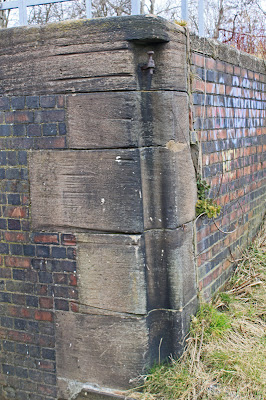Wyrley Bank Branch
Wyrley and Essington Canal - BCN
March 2013
Of all the lost sections of the BCN I have explored, this is perhaps the finest, it certainly offers a bit of everything all facilitated by a first class footpath. I therefore make no apologies for a repeat visit which was mainly to get some decent photo's as my earlier attempts were a bit rough.
My trip was undertaken by bicycle on a glorious Sunday morning in early spring when the sun was making a reasonable job of battling off the frost and the skylarks were singing to their hearts content in the sky above.
I wont trawl through the history too much - that can all be found in my November 2009 series of posts. By and large I will let the photos tell the strory, working south from Cheslyn Hay to its junction with the Wyrley and Essington Canal at Sneyd.
So we start at Wyrley Bank Wharf, now the site of a local nature reserve and is quite a challenge to find from the land. To find it by car look up Dundalk Road on Google Earth and head for Campians Wood at the far end.
As you can see, the area is peppered with collieries and associated tramways all which led to the branch canal and on to the energy hungry industries of the black country. This dependence on coal has huge significance for the waterway, as we will see as we progress south.
There is nothing left of the basin itself but the towpath is now a well made route and you soon find yourself walking beside a water filled channel.
Wyrley Bank Wharf 2013
The path soon leads out onto an embankment and the site of Wyrley Bank Bridge, one of the very few lift bridges on the BCN, a structure which still existed in the 1970's. The narrows and the stop plank grooves remain intact.
Wyrley Bank Bridge
Just south of the bridge the reason for the stop plank facility become plain to see. The end of this canal was swift and sudden as the ground subsided and a catastrophic breach occurred. The gap in the canal bed remains, now surrounded in fencing and a "feature" on the nature walk.
The breach site holds a final built curiosity - a sagging brick lined culvert which continued to drain water under the canal bed:
But dont get too excited, all good things come to an end. Suddenly the well preserved canal bed is swept away at the site of Gilpins Basin and in its place a huge area of reconstituted open cast mine workings.
The area has been well reclaimed with two ponds and a drainage channel which more or less tracks he course of the old channel but of the surrounding collieries, industry and railways no traces remain.
Opencast mine area on the gite of Gilpins Basin

















































